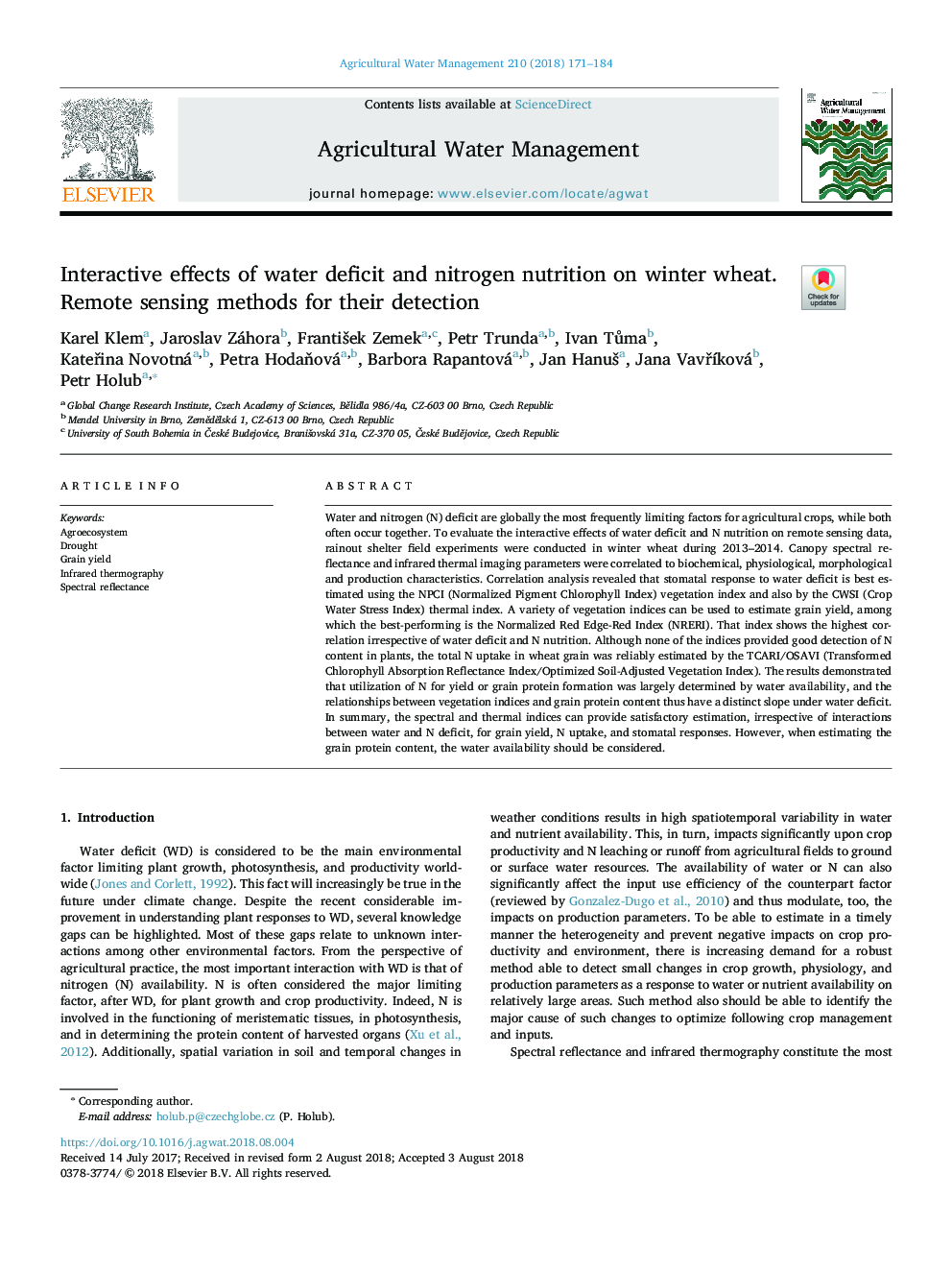| Article ID | Journal | Published Year | Pages | File Type |
|---|---|---|---|---|
| 8872721 | Agricultural Water Management | 2018 | 14 Pages |
Abstract
Water and nitrogen (N) deficit are globally the most frequently limiting factors for agricultural crops, while both often occur together. To evaluate the interactive effects of water deficit and N nutrition on remote sensing data, rainout shelter field experiments were conducted in winter wheat during 2013-2014. Canopy spectral reflectance and infrared thermal imaging parameters were correlated to biochemical, physiological, morphological and production characteristics. Correlation analysis revealed that stomatal response to water deficit is best estimated using the NPCI (Normalized Pigment Chlorophyll Index) vegetation index and also by the CWSI (Crop Water Stress Index) thermal index. A variety of vegetation indices can be used to estimate grain yield, among which the best-performing is the Normalized Red Edge-Red Index (NRERI). That index shows the highest correlation irrespective of water deficit and N nutrition. Although none of the indices provided good detection of N content in plants, the total N uptake in wheat grain was reliably estimated by the TCARI/OSAVI (Transformed Chlorophyll Absorption Reflectance Index/Optimized Soil-Adjusted Vegetation Index). The results demonstrated that utilization of N for yield or grain protein formation was largely determined by water availability, and the relationships between vegetation indices and grain protein content thus have a distinct slope under water deficit. In summary, the spectral and thermal indices can provide satisfactory estimation, irrespective of interactions between water and N deficit, for grain yield, N uptake, and stomatal responses. However, when estimating the grain protein content, the water availability should be considered.
Related Topics
Life Sciences
Agricultural and Biological Sciences
Agronomy and Crop Science
Authors
Karel Klem, Jaroslav Záhora, FrantiÅ¡ek Zemek, Petr Trunda, Ivan Tůma, KateÅina Novotná, Petra HodaÅová, Barbora Rapantová, Jan HanuÅ¡, Jana VavÅÃková, Petr Holub,
